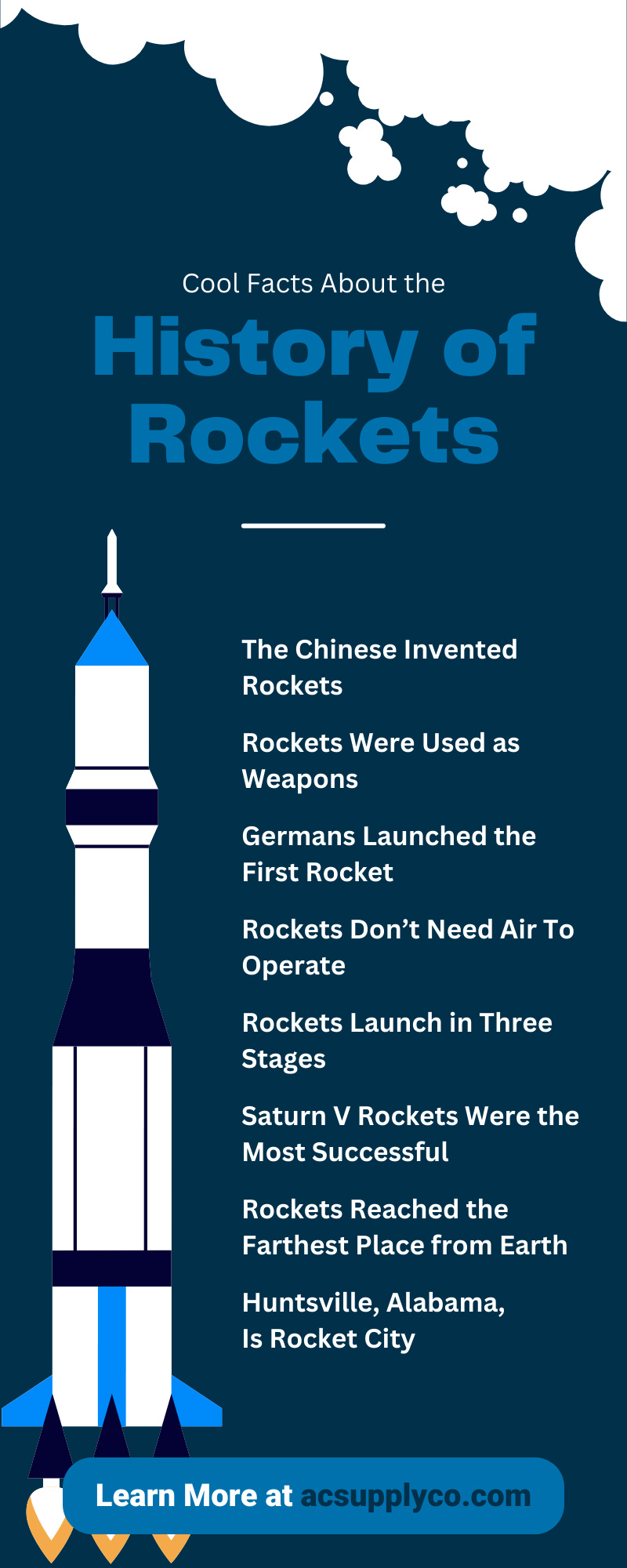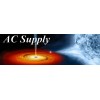The principles of rocketry date back more than 2,000 years. The world didn’t develop a fascination with space after Neil Armstrong took that one giant step. Humans have been obsessed with the unknowns of outer space for centuries. And as a result, we constructed and invented contraptions to help us get up there and explore. Discover eight cool facts about the history of rockets below.
The Chinese Invented Rockets
If you didn’t know who invented rockets, now you do. The Chinese had their hands on the idea dating back to either the 9th or 10th century. The first rocket might have appeared during the Song Dynasty with the invention of gunpowder. Originally, they used tubes with powder charges for fireworks.
The first rocket invented in the 10th century, around 1100 AD, used solid propellants. They made great fireworks and weapons. The first rocket was known as the gunpowder-propelled fire arrow. However, the Song Dynasty history attributes the invention to two different people at two different times, Feng Zhisheng in 969 and Tang Fu in 1000. The specifics are a little fuzzy.
Rockets Were Used as Weapons
As mentioned above, the Chinese used rockets for fireworks and weapons. During the war between the Chinese empire and Mongol invaders. The Chinese devised a gunpowder-fueled arrow. The retreating Mongols described these projectiles as “arrows of flying fire.” They were the first propellant rockets.
Rockets spread via the Mongol invasion to other areas of Eurasia in the mid-13th century. History reports that rocket-like weapons were used at the Battle of Mohi in 1241. This invention inspired others to dive into further experiments with case gunpowder which ultimately led to the development of military rockets and missiles.
Germans Launched the First Rocket
The Chinese may have cornered the market on rockets for a while, but they were not the first to launch a rocket into space. That credit goes to the Germans. The first rocket launched into space happened in 1942. Germany dubbed it the V-2 rocket. It was not intended for space travel.
Most of the motivation came from World War II. Germany reaching that level of technology inspired other European countries to explore similar developments. Germany used the weapon to bombard southern England and parts of allied-liberated western Europe. After the war, the V-2 became the basis of early North American and Soviet Rocket designs.
Rockets Don’t Need Air To Operate
The gas makes the rocket move forward. Air has no part in the matter. Rockets are different from jet engines. A jet engine needs air to work. In a rocket engine, fuel and a source of oxygen called an oxidizer mix and explode in the combustion chamber. We use thrust as a measurement for rockets because they are self-propelling projectiles.
The rocket’s exhaust keeps it moving in the same trajectory by using up the fuel in the body. We call this force thrust. Rockets must exert the same amount of force it weighs to propel themselves through and out of the atmosphere. The combustion from the chamber produces hot exhaust which passes through the nozzle to accelerate the flow and produce an adequate amount of thrust.
Rockets Launch in Three Stages
Rockets are one solid piece of metal, and it may seem like there is a simple countdown, and then the entire ship takes off but that’s not how it works. Rockets launch in three stages. The lowest, or the first stage, ignites and then lifts the vehicle at increasing velocity until its propellants reach exhaustion.
After the first stage drops off, lightening the vehicle, the second stage ignites and accelerates the vehicle further. Rockets do not carry axis-control systems to keep the second stage lightweight. The third stage spins like a top to ensure the rocket stays on course and the motor flies in the same direction while thrusting. It has the same motion as throwing a football in a perfect spiral. Rocket scientists call this term spin-stabilization.
Saturn V Rockets Were the Most Successful
The Saturn V rockets were not only the biggest of their kind, but they were also the most successful rockets ever launched. It totaled thirteen complete launches. Currently, at least two out of the thirteen Saturn V stages from the Apollo mission are still in space. NASA developed the super heavy-lift launch vehicle under the Apollo program for the exploration of the moon.
The rocket was human-rated, had three stages, and was powered with liquid fuel. Liquid-fuel rockets are more powerful than solid-fuel rockets. Scientists equip them with more reactive oxidizers, causing a stronger chemical reaction and stronger propulsion. However, solid-fuel rockets are safer. Liquid-fuel rockets have more chemical components which make them more volatile.
Rockets Reached the Farthest Place from Earth
As of 2018, records show that rockets Voyager 1 and 2 are 13 billion miles away from Earth. The twin rockets have now traveled the furthest distance from Earth. Previously, the satellites reached an unseen region known as the heliosheath in early 2009.
The heliosheath is just beyond the termination shock, which is the point where the solar wind slows abruptly, becoming denser and hotter. The solar wind piles up as it presses outward against the approaching wind in interstellar space.
Huntsville, Alabama, Is Rocket City
Huntsville, Alabama, may experience multiple changes to keep up with the new advancements of technology, but they always stay true to tradition. The U.S. town, Huntsville, is called Rocket City because the people living in this town basically started North America’s space travel legacy.
On January 31, 1958, ABMA placed North America’s first satellite, Explorer 1, into orbit using a Jupiter-C launch vehicle. The NASA space camp was also founded and is currently based in Huntsville. If you hobbyists intrigued by model rockets wanted to take a trip somewhere, this is the place to go. There’s only so much shopping you can do at a model supply store before you’ll want to see the real thing.
At AC Supply, we have so many interesting and cool facts about the history of rockets that anyone learning about them will want to start delving into this hobby. Visit our website for more information.



